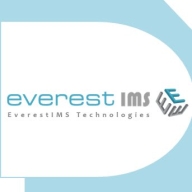

Cisco Nexus Dashboard Fabric Controller and Infraon IMS are notable competitors in the network management and monitoring space. Cisco appears to have the upper hand in terms of automation and integration, while Infraon IMS is favored for its robust feature set and pricing flexibility.
Features: Cisco Nexus Dashboard Fabric Controller provides advanced automation, connectivity monitoring, and integration for seamless data center management. It ensures stability and thorough analysis, notably integrating Nexus switches with SD-WAN solutions and other automation tools, making it suitable for complex environments. Infraon IMS focuses on real-time dashboards, customizable reports, and role-based access policies, offering granular insights and strong monitoring capabilities essential for network integrity.
Room for Improvement: Users of Cisco Nexus Dashboard Fabric Controller suggest improvements in tool integration, configuration processes, and reporting capabilities. The initial setup is perceived as complex, with calls for better pricing strategies. Infraon IMS could better integrate AI, expand reporting capabilities, and refine the GUI. There is also a call for improved alignment of licensing models with infrastructure needs and more seamless update management.
Ease of Deployment and Customer Service: Both products support on-premises and private cloud deployment, offering flexibility for varied infrastructures. Cisco's customers praise its excellent technical support but note certain operational improvements are needed. Infraon users point to its easy setup along with responsive support, while highlighting a lack of AI integration. Cisco’s support is especially commended for developmental help, whereas Infraon requires minimal external assistance.
Pricing and ROI: Cisco Nexus Dashboard Fabric Controller is considered expensive, yet its robust features, licensing model, and effective cost structure are seen as worthwhile investments, especially for large-scale implementations with significant ROI. Infraon IMS's flexible pricing model is tailored to specific customer needs and usage, appealing to varied budgets. Infraon's licensing flexibility enhances its attractiveness, making both options good investments, though Cisco's brand and expertise often justify a higher cost.
| Product | Market Share (%) |
|---|---|
| Cisco Nexus Dashboard Fabric Controller (Formerly DCNM) | 0.6% |
| Infraon IMS | 0.2% |
| Other | 99.2% |


| Company Size | Count |
|---|---|
| Small Business | 10 |
| Midsize Enterprise | 6 |
| Large Enterprise | 15 |
| Company Size | Count |
|---|---|
| Small Business | 3 |
| Midsize Enterprise | 2 |
| Large Enterprise | 3 |
The Cisco Nexus Dashboard Fabric Controller (NDFC) offers a comprehensive solution for managing Cisco NX-OS switches in hybrid-cloud environments, providing automation, visibility, and consistent operations. Designed to simplify and enhance data center management, NDFC integrates with Cisco Nexus Dashboard to streamline network connectivity, reduce deployment times, and ensure seamless transitions with minimal disruptions. Its modular architecture, new user interface, and support for non-Nexus OS platforms make it a robust tool for LAN, SAN, and IP Fabric for Media management. Additionally, NDFC enhances fabric reliability, automates workflows, and supports cloud connectivity with AWS and Microsoft Azure, making it ideal for businesses adapting to increasingly complex digital environments.
Infraon IMS offers network monitoring with real-time dashboards, customizable GUIs, and integrated tools, supporting device management and workflow automation efficiently.
Infraon IMS delivers stable performance with features tailored for easy customization and detailed network management. Users benefit from real-time monitoring through role-based dashboards and integrated ticketing tools. However, improvements in reporting, GUI usability, and AI integration are needed. Challenges include monitoring non-IPBS devices and improving connectivity visibility. Users require seamless Infraon Desk integration, ease of device addition, and enhanced topology views.
What are the key features of Infraon IMS?In industries like IT infrastructure and data center management, Infraon IMS is utilized for network monitoring and managing key components such as leased lines and firewalls. Its capabilities aid diverse geographical locations in overseeing data centers, offering centralized monitoring and access to critical infrastructure.
We monitor all Network Monitoring Software reviews to prevent fraudulent reviews and keep review quality high. We do not post reviews by company employees or direct competitors. We validate each review for authenticity via cross-reference with LinkedIn, and personal follow-up with the reviewer when necessary.